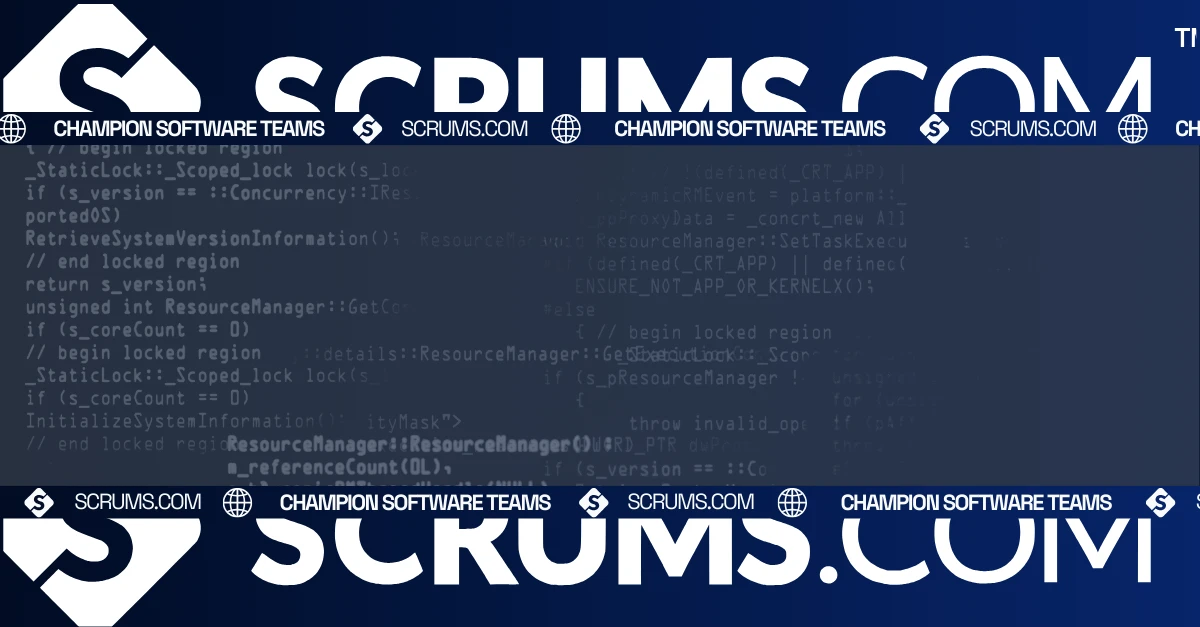CVS: Version Control System for Your Development Needs
Introduction to CVS
CVS (Concurrent Versions System) is a well-established centralized version control system designed to help development teams track, manage, and collaborate on code changes. Despite being one of the older systems, CVS is still widely used by businesses and software development companies due to its simplicity and robust functionality. For CTOs and business owners, CVS offers a straightforward solution for managing software development projects, making it ideal for teams focused on maintaining stability and control in their codebase.
What is CVS?
CVS, or concurrent versions system, is a version control system that allows multiple developers to collaborate on a single codebase. It was originally developed in the late 1980s and quickly became a staple for teams needing an organized way to track code changes and manage software development across distributed teams. As a centralized system, CVS stores the entire project in a single repository, which helps in maintaining version control and reducing conflicts when developers work on the same files.
CVS is particularly effective for businesses working on long-term, stable projects where the primary focus is maintaining control over version history and ensuring that changes are carefully tracked.
Core Features and Functionalities
- Centralized Repository: CVS stores the entire project’s code in one central repository, allowing developers to pull the latest version and submit changes.
- Version Tracking: CVS keeps a history of all code changes, ensuring that developers can revert to previous versions when needed.
- Branching and Tagging: Developers can create branches for different features or releases, keeping the main codebase clean and organized.
- Concurrent Development: CVS allows multiple developers to work on the same project simultaneously, reducing bottlenecks and ensuring faster delivery.
- Conflict Resolution: When multiple developers work on the same file, CVS provides tools to merge changes and resolve conflicts, ensuring consistency in the codebase.
- Access Control: Admins can set permissions, determining which team members can view, edit, or commit changes to the repository.
These features allow businesses to maintain structure and control over their projects while supporting collaboration across development teams.
Benefits for Businesses and Development Teams
For Businesses:
CVS offers several advantages for businesses looking to improve their software development processes:
- Efficient Collaboration: CVS helps teams work together by providing a centralized platform for managing code changes, reducing the risk of miscommunication.
- Cost-Effective: CVS is an open-source tool, making it a cost-effective solution for businesses that want to avoid licensing fees.
- Structured Code Management: CVS helps businesses maintain an organized and stable codebase, making it ideal for long-term projects that require ongoing maintenance.
For Developers:
CVS provides developers with a straightforward and reliable platform for version control:
- Easy Branching and Merging: CVS makes it easy for developers to create branches for new features or bug fixes, allowing for cleaner code management.
- Comprehensive Version History: CVS maintains a complete history of code changes, enabling developers to review or roll back changes as necessary.
- Collaboration Across Teams: CVS supports concurrent development, ensuring that multiple team members can work on the same project without delays or conflicts.
Use Cases and Applications
CVS is used in various industries where version control and collaboration are critical to project success.
- Software Development: CVS is commonly used by software development companies to track changes, manage releases, and ensure code integrity over time.
- Open-source Projects: Many open-source projects rely on CVS for its simplicity and ability to manage large codebases with multiple contributors.
- Legacy System Management: Businesses maintaining legacy systems often use CVS due to its stable and reliable version control processes.
- Research and Academic Projects: Research institutions and academic teams often use CVS to manage software and documentation for collaborative projects.
These use cases demonstrate CVS’s versatility in managing code and collaboration across various project types.
Integration Capabilities and Ecosystem
CVS integrates with several development tools and platforms, enhancing its functionality in software development workflows.
- Jenkins: CVS integrates with Jenkins for automated builds and testing, supporting continuous integration and delivery.
- IDE Integration: CVS is compatible with popular integrated development environments (IDEs) like Eclipse and IntelliJ IDEA, allowing developers to manage code directly within their workflow.
- Bugzilla: Integration with Bugzilla allows developers to link code changes to bug reports, streamlining issue tracking and resolution.
- Cloud and On-Premise Hosting: CVS can be hosted on both cloud platforms and on-premise servers, giving businesses flexibility in managing their repositories.
CVS’s integration capabilities make it adaptable to a range of development environments, ensuring smooth collaboration and project management.
Comparison with Alternatives
CVS is often compared to more modern version control systems like Git and SVN. Here’s how CVS compares:
Pros:
- Simple and straightforward for teams working on stable, long-term projects
- Centralized system makes it easier to control access and manage changes
- Cost-effective as an open-source tool
Cons:
- Lacks the distributed features and flexibility of Git, which allows for offline development
- More complex branching and merging compared to newer systems
- Smaller community and fewer modern integrations than Git or SVN
CVS remains a solid choice for businesses focused on simplicity, stability, and centralized control over their projects.
Getting Started with CVS
Here’s a step-by-step guide for business decision-makers and developers:
- Install CVS: Download and install CVS on your server or cloud-based repository.
- Initialize a Repository: Set up a CVS repository to store your project’s code and assets.
- Commit and Track Changes: Use CVS commands to commit code changes and track version history as your team works on the project.
- Manage Branches: Create branches for different features, bug fixes, or releases to keep your main codebase organized.
- Integrate with Your IDE: Connect CVS to your development environment (e.g., Eclipse, IntelliJ) for seamless code management.
Explore CVS’s comprehensive documentation for detailed setup guides and best practices.
Related Tools and Resources
CVS API Documentation for Developers
Explore Related Software Development Tools
FAQs
We've got you covered, these are some common questions we receive. Not seeing the answer to something?...
CVS is a stable and reliable option for businesses managing long-term or legacy projects, though newer tools like Git may offer more flexibility for fast-paced development.
Yes, CVS is an open-source version control system available at no cost to businesses and developers.
Yes, CVS can support large development teams, allowing multiple users to work on the same codebase simultaneously.
CVS is a centralized version control system, while Git is a distributed system. Git allows developers to work offline, whereas CVS requires a connection to the central repository.
CVS integrates with popular IDEs like Eclipse, IntelliJ IDEA, and NetBeans, enabling developers to manage code directly within their development environment.
Yes, CVS supports branching and merging, allowing teams to work on different features or releases concurrently.
Explore Software Development Blogs
The most recent trends and insights to expand your software development knowledge.






